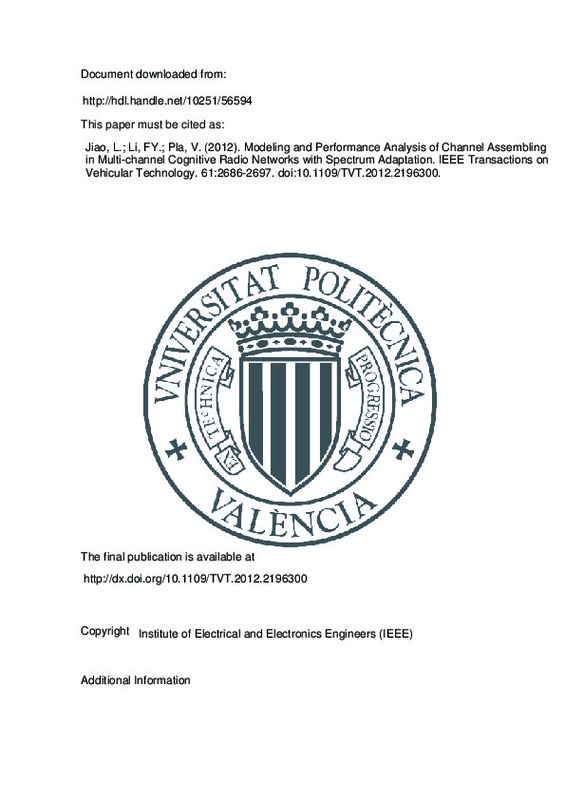JavaScript is disabled for your browser. Some features of this site may not work without it.
Buscar en RiuNet
Listar
Mi cuenta
Estadísticas
Ayuda RiuNet
Admin. UPV
Modeling and Performance Analysis of Channel Assembling in Multi-channel Cognitive Radio Networks with Spectrum Adaptation
Mostrar el registro completo del ítem
Jiao, L.; Li, FY.; Pla, V. (2012). Modeling and Performance Analysis of Channel Assembling in Multi-channel Cognitive Radio Networks with Spectrum Adaptation. IEEE Transactions on Vehicular Technology. 61:2686-2697. https://doi.org/10.1109/TVT.2012.2196300
Por favor, use este identificador para citar o enlazar este ítem: http://hdl.handle.net/10251/56594
Ficheros en el ítem
Metadatos del ítem
| Título: | Modeling and Performance Analysis of Channel Assembling in Multi-channel Cognitive Radio Networks with Spectrum Adaptation | |
| Autor: | Jiao, Lei Li, Frank Y | |
| Entidad UPV: |
|
|
| Fecha difusión: |
|
|
| Resumen: |
[EN] To accommodate spectrum access in multichannel
cognitive radio networks (CRNs), the channel-assembling technique,
which combines several channels together as one channel,
has been proposed in many medium access ...[+]
|
|
| Palabras clave: |
|
|
| Derechos de uso: | Reserva de todos los derechos | |
| Fuente: |
|
|
| DOI: |
|
|
| Editorial: |
|
|
| Versión del editor: | http://dx.doi.org/10.1109/TVT.2012.2196300 | |
| Código del Proyecto: |
|
|
| Agradecimientos: |
This work was supported in part by the European Union Seventh Framework Programme Marie Curie Actions International Research Staff Exchange Scheme (EU FP7-PEOPLE-IRSES) through the Security, Services, Networking, and ...[+]
|
|
| Tipo: |
|







![[Cerrado]](/themes/UPV/images/candado.png)


